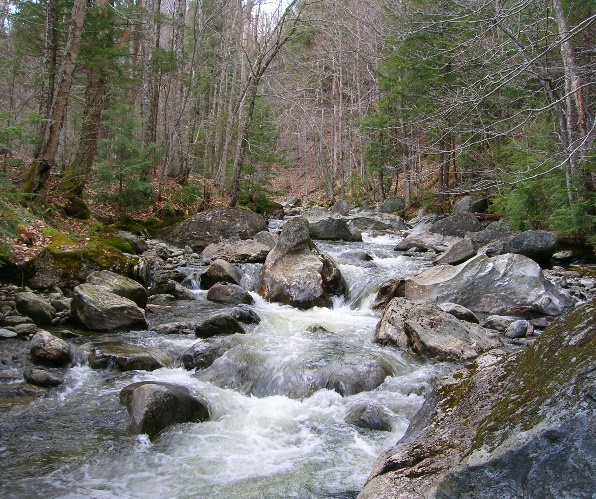Long-Term Trends in Stream Macroinvertebrate Communities
Jul. 28th 2016The Vermont Monitoring Cooperative (VMC) hosts long-term water quality datasets produced by Vermont Department of Environmental Conservation (VT DEC) and US Geological Survey (USGS) to analyze water quality. The data is used to monitor changes to streams, such as stream flow, that may be a result of climate change.
Ranch Brook, a near-pristine mountain stream near Stowe, has been monitored annually since 2000. Samples collected include water quality, macroinvertebrate and fish communities, physical habitat, and water temperature. The USGS has also installed a stream gage to continuously measure stream discharge.
Macroinvertebrate sampling, as a metric of water quality, can be reflective of other stream health data such as water quality and habitat characteristics. Streams qualified as healthy contain many types of macroinvertebrates, particularly those that require clean water and specific habitat features, such as tree cover and rock size.
Macroinvertebrate samples were collected each year in early fall (September 1 – mid-October) from stream riffles - shallow, fast-moving reaches of the stream, typically with cobble-sized or smaller rocks. Macroinvertebrate density, or number of macroinvertebrates in a specified area, informs us of stream productivity as well as water quality and habitat stability. Total richness is a measure of biodiversity. Ephemeroptera, Plecoptera, Trichoptera (EPT) richness describes the diversity of macroinvertebrates that are sensitive to water quality; a lower richness indicates poorer quality.
Ranch Brook is considered a healthy, near-pristine stream by VT DEC standards. Long-term monitoring of the stream provides valuable information about the continued health of the stream and how changing conditions impact the stream.
Despite the current label as a healthy stream, the long-term trends are showing a decline in macroinvertebrate density. Lower density suggests lower productivity in the stream. The trend is likely due to higher annual peak discharge. High discharge events sweep macroinvertebrates downstream, reducing density. Stream beds are scoured during high discharge events. Scouring carries woody debris and small rocks downstream, destabilizing the habitat for macroinvertebrates and fish. High annual peak flow and high precipitation events are expected to become more common under a changing climate.
Although macroinvertebrate density is declining, total and EPT richness of macroinvertebrate communities remained very high during the study period. Richness is slower to respond to changes in flow regime of a stream. Stream monitoring will continue, so it will remain to be seen if high flows continue to scour the streambed and if that results in changing richness.
One change in the macroinvertebrate community that is already being observed is an increase in one particular mayfly family, Baetidae, known to be early colonizers of disturbed habitats. Continued observation of the abundance of Baetidae will add to the knowledge of how the stream is changing under changing flow regimes.
Fish communities are also affected by more frequent high flow events. Fish rely on macroinvertebrates as part of their diet; lower abundance can be a problem for fish.
Long-term data from Ranch Brook and other undeveloped streams is valuable to monitoring changes over time and trends that may be a result of climate change.
 ecoNEWS VT
ecoNEWS VT